Diane: After the final Easter procession and a couple of wild days with little sleep, most out-of-towners were on their way home. We, on the other hand, decided to stay a couple of extra days to chill out and enjoy the surrounding countryside.
Peru's first empire builders, the Wari, built their capital near current-day Ayacucho. The Incas successfully covered the tracks of prior cultures, so speculation rules the day when it comes to the Wari. Current evidence suggests that the Wari empire spanned most of Peru as far north as Chiclayo and as far south as Arequipa. They worshiped mummies. Their stone carving abilities probably provided the foundation for the great advances made by the Incas. The Wari expanded their empire combining the cultures of their predecessors and then evangelizing, rather than fighting and enslaving (Update: I have subsequently read sources that indicate the Wari were no different than most other empire builders, fighting their way to the top. This is certainly a more believable version of events; although I would love to stick with the evangelizing version of events). Current estimates suggest that in its hey-dey, the capital spread over between 740 and 1000 acres. Although largely buried by sand, the ruins of the Wari capital are being preserved in an archaeological preserve that visitors may wander through. Still visible above ground are walls up to 12 feet high. Although harder to spot, Calliope can be seen there as well.
However, the large majority of ruins are covered by a beautiful forest of prickly-pear cactus.
Although the Wari ruins are on the way to the small town of Quinua, the combis (buses) that passed by were all full. After an hour or so, we ended up catching a ride in the back of a large truck hauling glass, paint, miscellaneous building supplies, and workers to a school construction project in Quinua. Just before the town, as the truck slowed to a stop, one of the passengers in the cab hopped out, grabbed a stone, and put it behind the right back tire. The stone was a tad too small and the truck started to roll downhill. We braced for impact. The back tires rolled off the road and crossed an irrigation ditch, lodging with an air of permanence. We hopped out and continued into Quinua on foot. I was fervently hoping that our additional weight did not cause the brakes to fail.
Quinua is known for its "iglesias de Quinua", miniature clay churches on top of their houses that are purported to bring good luck. We learned about the custom of placing small sculptures on rooftops back in Cuenca. In Cuenca, the sculpture usually embodied Catholic iconography, generally including a cross. In pre-Colombian times, they were displayed for good luck. After the Spanish came, displaying a cross on the roof demonstrated their newly-imposed faith. Almost as an aside, these small sculptures were also effective lightning rods.
In Quinua, these rooftop sculptures ranged from simple affairs to elaborate productions.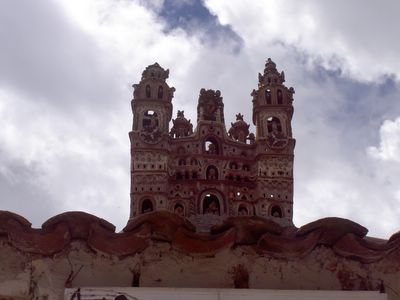
We filled up on soda before heading uphill to the extremely quaint central plaza and then out of town to the Pampa de Ayacucho. A stone obelisk has been erected there to memorialize the final battle for South America's independence fought and won in 1824.
My guide book says that the "battle began at 10 a.m. after relatives and friends on opposing sides were allowed to greet each other." 44 years earlier there had been an indigenous rebellion against the Spanish. As recently as the 1980's and 1990's, this area was the home of an 11-year civil war that claimed thousands of Peruvian lives. There isn't anybody left to talk with concerning the battle for South American independence, but there are lots of people to talk with about the more recent violence.
- A 25-year-old Ayacuchan, who would have been born just as the most recent violence erupted says that nobody in his family will talk about those years. His Mom just starts crying, even though they only lost one family member.
- Other older Ayacuchans I spoke with say that the terrorists came from other towns and from the countryside and that the movement really didn't have local roots.
- A foreigner who married a local woman and has lived in Ayacucho for the past 8 years says that most of the educated Ayacuchans fled to Lima and that after the violence ended, the terrorists all moved into the drug trade or moved to Lima. He felt that the people who are left don't have much interest in politics.
- Cedy, with whom I shared Spanish and English conversations, says that there were uprisings here, because the poverty was so much more intense than elsewhere. After the agrarian reform in the 70's, when land was taken from the large landholders and redistributed to those who worked the land, campesinos here found themselves in an untenable position. Mining had been the regional economic base. The campesinos here didn't have the expertise needed to run successful mining operations; that knowledge had departed along with the large property owners. Yet, the land was too rocky to be farmed. Although the government provided assistance to the local people; it was all directed toward improving farming methods, which was a futile activity.
It was obvious that most people were reluctant to talk about this tragic chapter in Ayacuchan history. However, there was one group that was interested in remembering it. They put out an alternative tourist map and distributed it for free. Instead of showing churches, plazas, and markets as primary points of interest, it highlighted sites of government violence, rebellions, and resistance.
I have a rule of thumb that I have lived by while in South America - I don't take much stock in anything anyone tells me, unless another independent source tells me the same thing. Perhpas there is a little bit of truth in all the accounts of recent history, but no two people gave me the same perspective. As a result, I'm not going to speculate on this, except to say that I'm impressed/baffled/blown-away that such a strong desire for independence has apparently been passed down through the generations for a couple hundred years.
Regardless of its prominent place in history, the Pampa de Ayacucho provided one big photo op.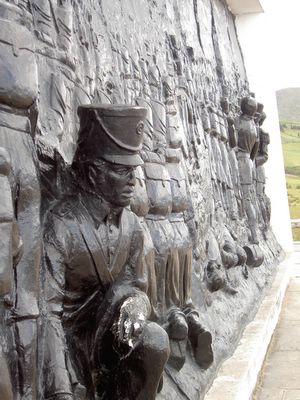
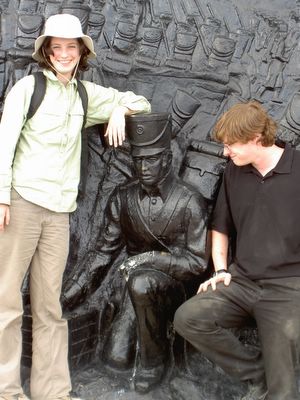
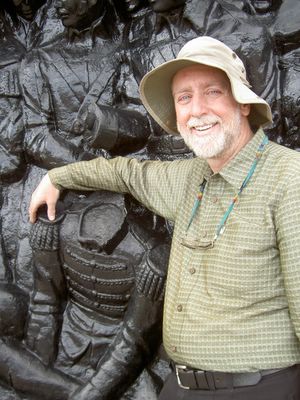
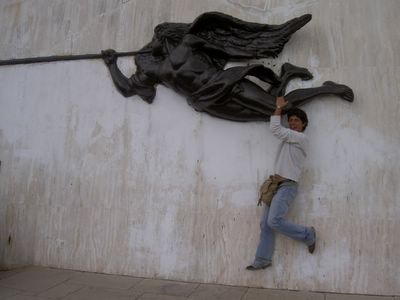

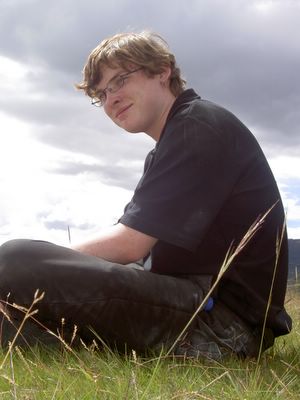
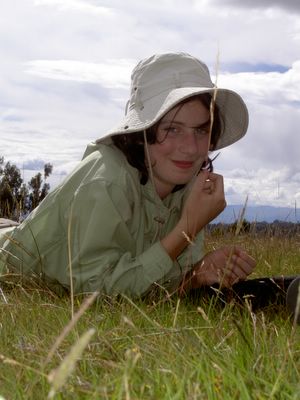
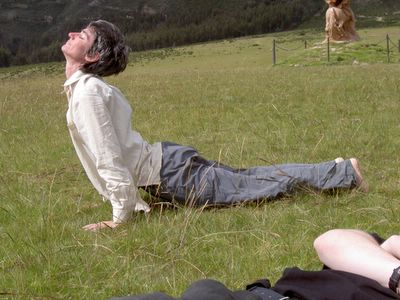
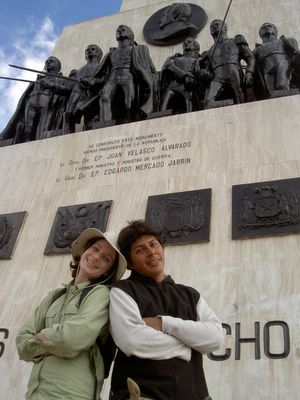


1 comment:
Thank you. I appreciate the compliment, especially from someone who doesn't even know me! -Diane
Post a Comment